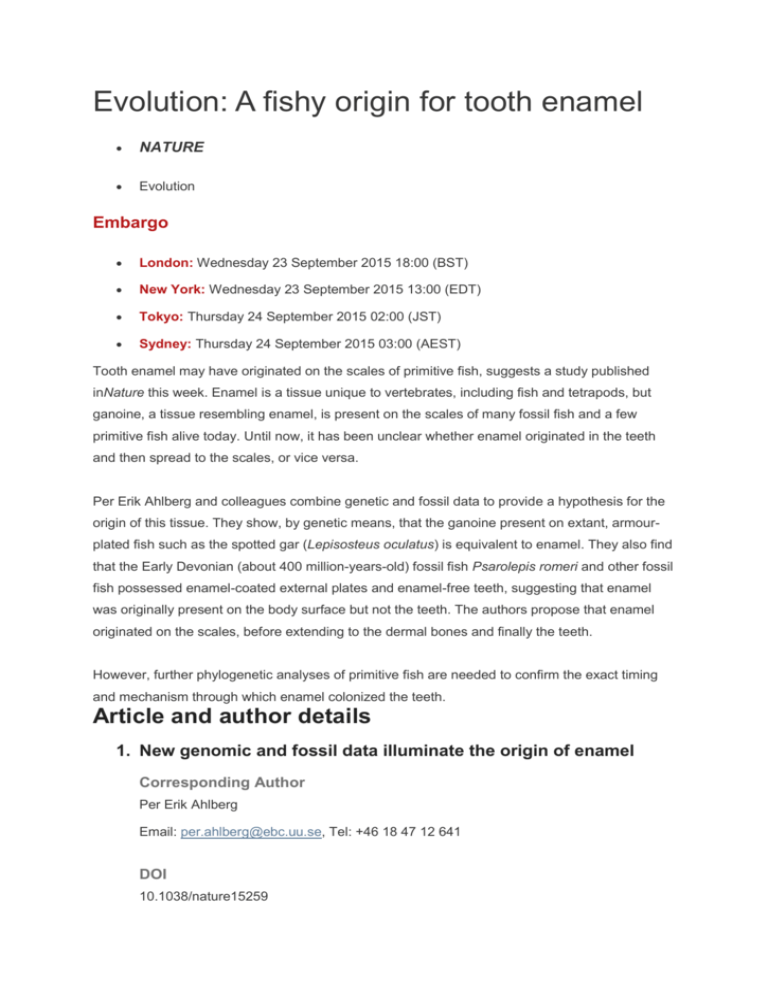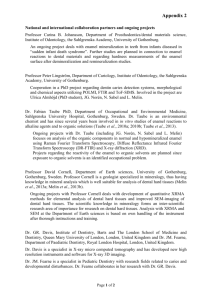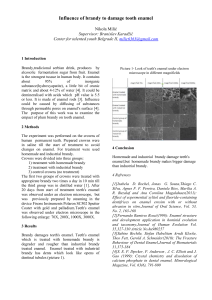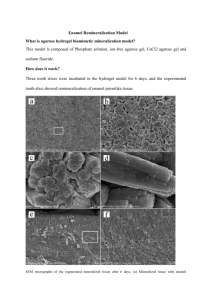Media Release
advertisement

Evolution: A fishy origin for tooth enamel NATURE Evolution Embargo London: Wednesday 23 September 2015 18:00 (BST) New York: Wednesday 23 September 2015 13:00 (EDT) Tokyo: Thursday 24 September 2015 02:00 (JST) Sydney: Thursday 24 September 2015 03:00 (AEST) Tooth enamel may have originated on the scales of primitive fish, suggests a study published inNature this week. Enamel is a tissue unique to vertebrates, including fish and tetrapods, but ganoine, a tissue resembling enamel, is present on the scales of many fossil fish and a few primitive fish alive today. Until now, it has been unclear whether enamel originated in the teeth and then spread to the scales, or vice versa. Per Erik Ahlberg and colleagues combine genetic and fossil data to provide a hypothesis for the origin of this tissue. They show, by genetic means, that the ganoine present on extant, armourplated fish such as the spotted gar (Lepisosteus oculatus) is equivalent to enamel. They also find that the Early Devonian (about 400 million-years-old) fossil fish Psarolepis romeri and other fossil fish possessed enamel-coated external plates and enamel-free teeth, suggesting that enamel was originally present on the body surface but not the teeth. The authors propose that enamel originated on the scales, before extending to the dermal bones and finally the teeth. However, further phylogenetic analyses of primitive fish are needed to confirm the exact timing and mechanism through which enamel colonized the teeth. Article and author details 1. New genomic and fossil data illuminate the origin of enamel Corresponding Author Per Erik Ahlberg Email: per.ahlberg@ebc.uu.se, Tel: +46 18 47 12 641 DOI 10.1038/nature15259 Online paper* http://nature.com/articles/doi:10.1038/nature15259 * Please link to the article in online versions of your report (the URL will go live after the embargo ends). Geographical listings of authors China & Sweden











